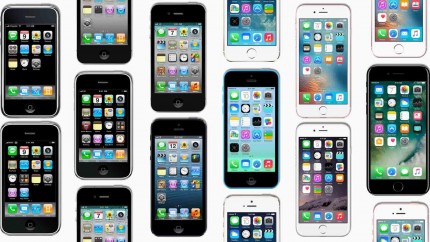What is TikTok and is it safe?
The Chinese app has more users than Twitter - but safety concerns are growing

TikTok has amassed more than 800 million downloads worldwide since launching in 2016
A Chinese video-sharing app that has amassed hundreds of millions of users is now tipped to become the next big social media craze in the UK.
After launching just two years ago, TikTok - which goes by the name of Douyin in its native China - has a larger following than Snapchat, Vine and even Twitter, and is attracting a growing number of British teenagers, The Times reports.
TikTok users can create short videos of themselves lip-syncing to songs, or acting out comedy sketches, with a database of music, effects and sound bites from which to choose.
The app has been “held up as a space somehow free from the vitriol and danger of other social media networks”, says the Vice Motherboard news site. However, in recent months that image has been tarnished by allegations that TikTok’s under-regulated content provides a platform for racist views and the solicitation of explicit images of children.
What is TikTok?
In 2014, a video-sharing app known as Musical.ly was launched by Shanghai-based tech designers Alex Zhu and Luyu Yang. Users could create videos of up to a minute showing them lip-syncing to songs of their choosing, with added effects including time lapse, slow motion and filters.
By 2015, Musical.ly had attracted millions of followers to become the most-downloaded app on the US iOS store - prompting Chinese internet technology firm ByteDance to create its own version, TikTok, in September 2016. TikTok branded itself as a more “global” version of Musical.ly, launching in Southeast Asia and beyond.
In November 2017, ByteDance paid a reported $1bn to acquire Zhu and Yang’s app, which was then folded into TikTok, reports Vox.
Following the introduction of a number of new features, TikTok emerged in its current form - described by science and tech news site Inverse as a “fusion of Vine’s short video format, Snapchat’s interactive filters, and Musical.ly’s lip-syncing gimmick”.
The app has now been downloaded about 80 million times in the US, and nearly 800 million times worldwide, says CNN.
As Vox notes, TikTok “transports you into the worlds of regular American teenagers whose videos have thousands of likes and hundreds of supportive comments”, and the “relative rarity of bullying and trolls that swarm other sites” was a key factor in its rise.
So why the controversy?
Two major issues have been cited by critics of the app.
The first is the growth of a community of users “who appear to be soliciting explicit images of boys and girls”, says Vice, which reports that “some young users have complained on the platform about other people repeatedly asking them for nudes”.
TikTok is meant to be restricted to over-12s only, but The Times notes that ages are “self-declared and not verified”.
French YouTuber Le Roi des Rats told the newspaper that predators “do not hide at all” on the app, adding: “When a young girl dances in skimpy clothes or imitates sexy dances, you’re sure to find people in the comments either asking them to continue making these kinds of videos, saying they’re sexy or asking for their Snapchat or DM [to direct message]. Some of these girls are not even ten years old.”
The platform does not allow users to send videos or images to other users via direct messaging, so people soliciting nudes “will likely move onto another app after making contact” on TikTok, explains Vice.
In a statement, a TikTok spokesperson said: “Such behaviour is not only abhorrent, it is prohibited on TikTok.
“TikTok doesn’t permit images or videos to be sent in comments or messages, and users can make their account private, block another user, report an account or content, and disable the ability to receive messages.”
There have also been reports that “far-right trolls have targeted users” on the site, posting openly racist messages in response to videos uploaded by black or Jewish users, among others, says The Times.
The newspaper cites videos showing people holding signs saying “Jim Crow Laws for US” and wearing Ku Klux Klan-style hoods. One clip shows a caricature of a Jewish man being set alight while a man makes Nazi salutes.
In response, TikTok said: “Promoting a safe and positive app environment is our top priority and we have a number of measures in place today to protect against misuse. Users can make their account private, block another user, report an account or content and disable the ability to receive messages.”










